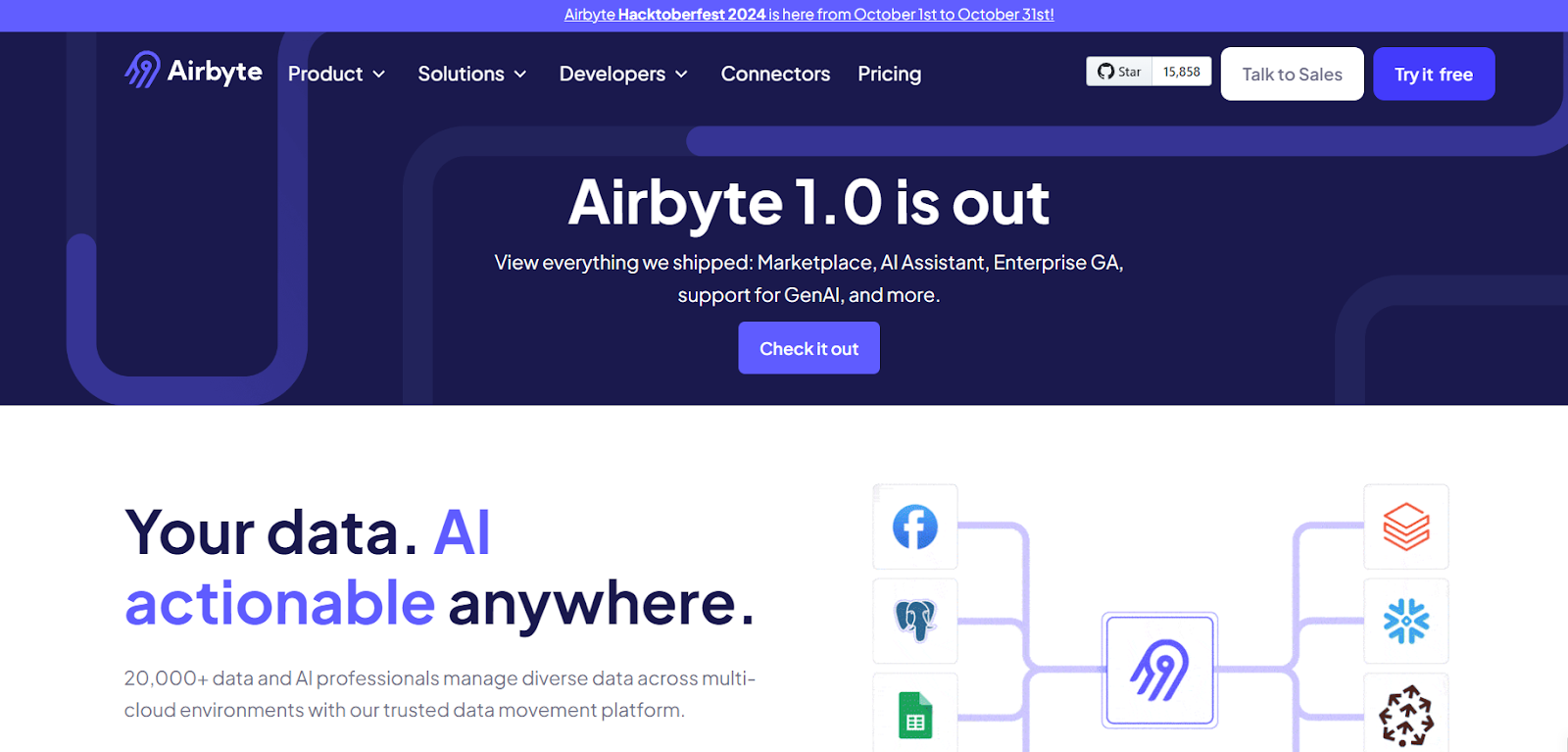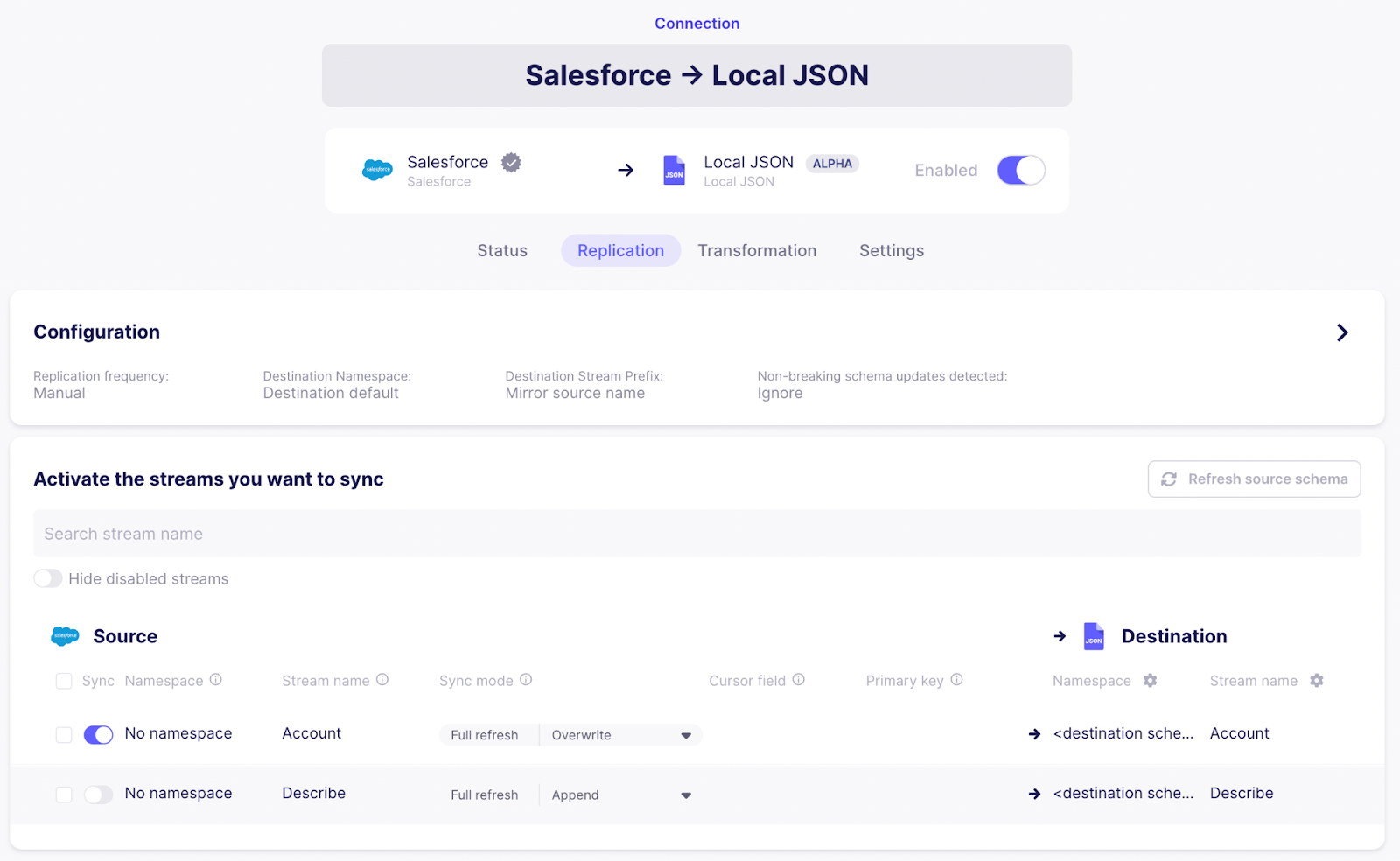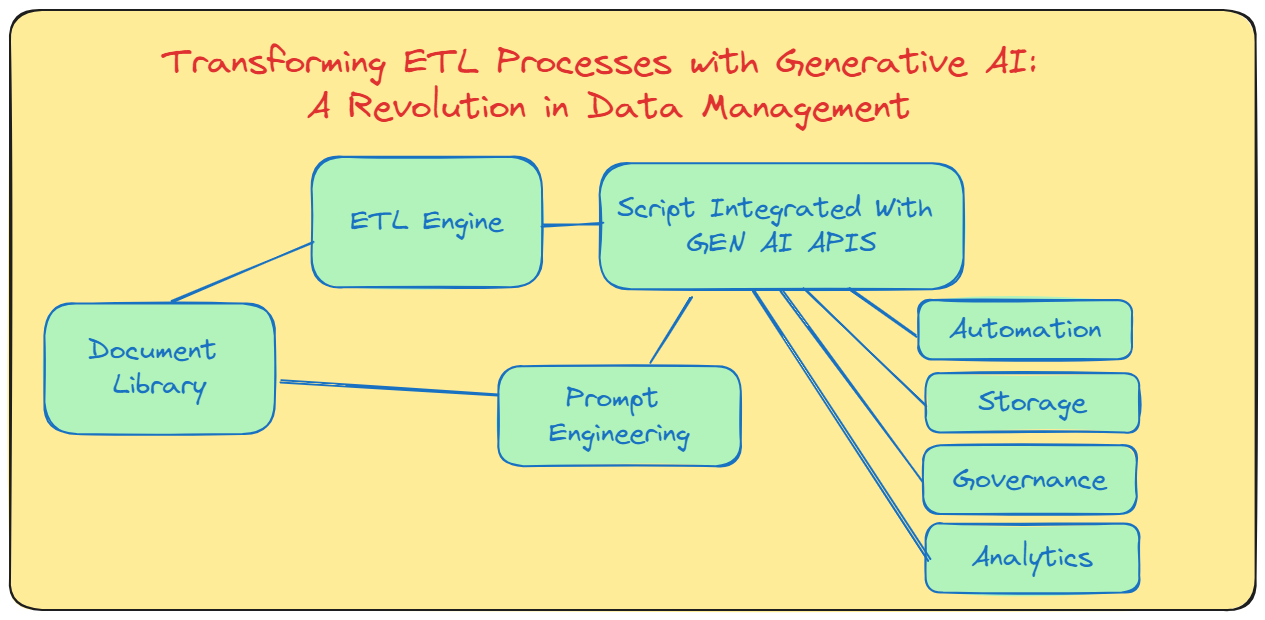How to Use GenAI in Data Engineering
Summarize this article with:
✨ AI Generated Summary
In the last two decades, you must have experienced a dynamic shift in how you interact with and utilize data. This change is due to rapid advancements in technologies such as artificial intelligence (AI), large language models (LLMs), and cloud computing.
The modernization of data infrastructure has transformed how data is collected, processed, and analyzed to make intelligent, informed decisions. Data engineers from organizations across industries, such as health care, finance, and manufacturing, leverage these advanced technologies to support their diverse use cases.
In this article, you will explore how to use GenAI (Generative Artificial Intelligence) and how this up-and-coming trend impacts various aspects of data engineering. You will also learn about several use cases where GenAI can be beneficial compared to other conventional methods.
Introduction to GenAI in Data Engineering

Data engineering is a crucial part of data management. It involves designing, building, and maintaining systems to convert raw data into useful information. With this process, you can ensure that your data is accessible, trustworthy, and understandable for the stakeholders involved.
However, with the exponential growth in the volume and complexity of data, cleaning and organizing it for downstream tasks has become challenging. This can lead to inconsistent, incomplete, and inaccurate data flowing into your data pipelines, resulting in biased outcomes and faulty reports.
Dealing with bad data is every data engineer's pet peeve. It pushes them to experiment with new data solutions, techniques, and methodologies and find ways to enhance data quality and reliability. GenAI is one such technology adopted by data experts as a game-changer in data engineering.
Generative AI is artificial intelligence that creates new content, such as text, images, audio, video, and other media, in response to your prompts. It trains and generates new data using neural networks, variational autoencoders (VAEs), and other data models. GitHub Copilot, ChatGPT, Jasper, and DALL-E are popular examples of GenAI platforms. Some GenAI tools are used to write blogs and creating visuals, some are built for coding, and creative tools like AI logo makers are designed for generating branding elements.
Integrating GenAI with data engineering has improved the efficiency of many processes, including data architecture development, automating data preparation workflows, and building algorithms and prototypes. This frees up the valuable time of data engineers and allows them to focus more on strategic activities. Moreover, tools like Avatis AI can help in data collection
Will AI replace Data Engineers?
While AI is crucial in optimizing several data engineering tasks, it is far-fetched to think that AI will replace data engineers. It is more like a helping hand that enables you to streamline your data workflows and automate error-prone, repetitive tasks (common in data engineering).
Beyond these chores, data engineering also involves work that demands a deeper understanding of complex data structures, dynamic database management, and organizational needs.
Performing these responsibilities requires a combination of technical knowledge and business context. As a data engineer, you often make judgments about using data to meet business objectives while adhering to ethical standards and regulatory requirements. AI, on the other hand, cannot replicate a human’s rationality in such cases.
Additionally, as AI keeps evolving, you will probably see a shift in your role rather than replacements. You might have to take on workloads that revolve around validating and refining AI-driven tools and ensuring these technologies align with the organization’s data goals. AI will only be a strategic asset, enhancing your capabilities as a data engineer.
Use Cases for GenAI in Data Engineering
To gain maximum benefits from implementing advanced data engineering tools and techniques, you should know how to use GenAI effectively. Here are some of the GenAI use cases in data engineering:
Code Generation and SQL Query Translation
GenAI can generate boilerplate code to speed up your data processing tasks. Based on your prompt’s specifications on data schema and the type of operations you want to implement, the AI model generates the initial code. You can further modify it based on your requirements. By using GenAI for scripting or code creation, you can reduce your coding time by 35% to 45%.
As a data engineer, working with multiple SQL dialects across various databases can be challenging. This can lead to inconsistencies and low productivity. However, GenAI can help you by automatically translating SQL queries from one dialect to another. It significantly minimizes syntax errors and provides consistent translations, ensuring data integrity.
Synthetic Data Generation
Synthetic data is artificial data that replicates the statistical patterns and characteristics of real-world data without compromising data privacy or confidentiality. You can use GenAI to generate synthetic data to perform software testing when real-world data is limited, has sensitive information, or is difficult to obtain.
With GenAI, you can augment limited datasets, enhance data diversity, implement data anonymization to remove personally identifiable information, and reduce bias to train machine-learning models. It is helpful across industries dealing with sensitive information, such as finance, healthcare, and research.
Generating Data Documentation
Data documentation, crucial for understanding and maintaining your data assets, is one of the GenAI use cases in data engineering. GenAI enables you to create comprehensive data documentation by analyzing schemas, attributes, and relationships. It provides detailed descriptions for your databases, guidelines for better utilization, and information about access and permissions.
This fosters an environment for better collaboration. GenAI-generated documentation reduces the time and effort required for maintenance and scales to accommodate increased data volume and complexity. It adheres to the best industry practices and ensures relevance by implementing continuous updates.
Enriching Data Quality
High data quality is necessary to maintain your data’s integrity and increase the effectiveness of your decision-making process. GenAI utilizes intelligent algorithms and ML techniques to allow you to execute data profiling, anomaly detection, and missing data imputation.
GenAI can automatically generate data validation rules based on historical data, compliance requirements, and security policies. You can apply these rules to the incoming data and mold it according to your pre-defined standards, mitigating the risk of incorrect data reports.
Data Governance and Metadata Management
Well-established data governance and metadata management can help improve your data’s traceability. You can leverage GenAI to capture and document metadata, data lineage, and quality metrics automatically, simplifying data governance.
GenAI allows you to track data transformations across systems, generate data lineage diagrams, and perform auditing. This helps you optimize data lineage and troubleshoot issues by pinpointing the root cause.
How Will GenAI Help Data Engineers?
A major chunk of a data engineer’s work involves designing, testing, and deploying data pipelines for streamlined data analytics. However, due to the increasing number of data sources, such as IoT devices, social media platforms, and customer service data, data management has become complicated. This can further lead to many issues that can be avoided if GenAI enters the workflows:
- Simplified Data Integration: You can unify multiple data sources with different data formats and structures using GenAI. It automates data mapping and schema generation, ensuring consistent data flows across systems for further data processing tasks.
- Efficient Debugging Assistance: GenAI suggests code debugging solutions by identifying issues and recommending corrections, allowing you to resolve problems faster and maintain smoother data flows.
- Democratized Data Representation: You can utilize GenAI’s data exploration and visualization capabilities to build high-quality charts, graphs, and reports directly from datasets. These visuals are so clear that even your non-tech staff can easily understand the data trends and patterns.
- Quicker Time-to-Insights: With GenAI, you can significantly reduce manual errors and inaccuracies associated with high-volume data handling and monitoring system maintenance. It identifies and resolves bottlenecks and provides real-time insights, reducing delayed responses and improving damage control.
- Automated Feature Engineering: You can provide GenAI with natural language prompts and contextual factors such as project objectives and data characteristics. GenAI leverages this information to develop, select, and prioritize features that enhance your ML model’s performance.
- Handling Complex Transformations: GenAI automates data transformations such as cleaning messy datasets, deduplication, normalization, and standardizing data formats. It also enables you to parse nested data structures and flatten datasets, minimizing the performance overhead of the downstream workloads.
How Airbyte's Open Data Movement Helps GenAI Integration in Data Pipelines
As a data engineer, it is a given that you work with large volumes of unstructured data flowing in from various sources. To simplify handling this data and maximize its potential, you can integrate your data pipelines with GenAI.
Airbyte, an open data platform, helps you facilitate this by offering 400+ pre-built connectors and the flexibility to create custom connectors. You can create the required connector using a connector builder or a low-code connector development kit (CDK). The connector builder provides an AI assistant to automate and speed up the process of building custom connectors using API documentation links.

With Airbyte, you can streamline your GenAI workflows by leveraging its support for vector databases, RAG (retrieval-augmented generation) transformations, and LLM frameworks (LangChain, LlamaIndex). Its easy-to-setup, production-ready deployment, robust security features, and support for a broad range of use cases across industries enable you to build AI-powered applications efficiently.
Here is an example of how you can implement GenAI integration in your data pipelines using Airbyte, Dagster (orchestrator), and LangChain.
Setup Your Airbyte Connection
- Log in to your Airbyte account and click the Sources tab on the dashboard.

- Enter the data source connector that you want to use and hit enter. You will land on the configuration page.
- Enter all the mandatory fields and click the Set up source button. For convenience, let’s consider Salesforce as the source database and JSON as the destination.

- Configure local JSON as your destination and complete the connection between source and destination by setting the replication frequency parameter to manual.
The next step is configuring the Dagster pipeline and adding a LangChain loader to convert raw JSONL files into LangChain documents. Then, split the documents into chunks, generate embeddings, and specify how you would like to store the embeddings file in your local vector database.
The last step is to create a QA application using LangChain, which allows you to submit tasks to the LLM and receive answers. To learn about the steps in detail, you can refer to this tutorial.
Some more features of Airbyte that can simplify working with AI pipelines include:
- Easy Integration with Production Environment: Airbyte provides various deployment options, enabling you to integrate the platform with all your production workflows. It gives you the flexibility to explore data using the user interface, Terraform Provider, API, or PyAirbyte.
- Data Transformations: You can perform custom transformations using the dbt Cloud integration. Airbyte also allows you to integrate with LLM frameworks to perform automatic chunking, embedding, and indexing and store the transformed data into eight vector databases.
To learn more about utilizing Airbyte in your GenAI applications, you can contact the experts or refer to the documentation.
Implementing GenAI in ETL Processes
By implementing GenAI, you can streamline various stages of the ETL (Extract, Transform, Load) processes by automating repetitive tasks and optimizing resource utilization. It is especially beneficial when working with unstructured data such as text, video, audio, and images. Here are some points on how to use GenAI in ETL workflows:

- Automated Document Scanning: You can use GenAI to read and interpret unstructured documents to identify required data and extract valuable information based on specific criteria.
- Contextual Information Extraction: Unlike conventional keyword searches, you can use GenAI to implement semantic searches through natural language processing (NLP) and extract information from multiple sources.
- Error Detection and Rectification: With GenAI, you can rectify data entry issues such as typographical errors and inconsistencies. It analyzes surrounding data to intelligently fill in missing values, improving the data completeness without manual intervention.
- Data Relationship Mapping: GenAI automatically identifies the relationship and patterns between specific data fields. This understanding enables it to generate more accurate transformation scripts while reducing human intervention.
- Metadata Enrichment: GenAI extracts metadata such as keywords, descriptions, and tags, enriching organizational data catalogs with detailed information that improves data comprehension and accessibility. This also facilitates improved data discovery.
- Self-Updating ETL Pipelines: These AI-driven pipelines identify any changes in the source data structure and schema and map these changes to the target by modifying the pipeline code. This enables them to accommodate any format updates without any interruptions or delays.
- Self-Healing ETL Pipelines: GenAI learns from historical data and addresses unexpected pipeline errors due to system overload, data format inconsistencies, or hardware failures. This results in minimal downtime and robust pipelines that can independently recover from failures.
GenAI for Data Modeling and Schema Design
Another crucial task that you, as data engineers, handle is data modeling and schema design. Data modeling involves creating simplified visual representations defining how information is collected and managed within an organization. Schema design, on the other hand, is the blueprint of a database where you organize data into entities, create relationships between them, and apply constraints.
Both these processes are time-consuming and error-prone. By introducing GenAI, you can utilize many advanced algorithms and ML techniques to create and maintain data structures. Below is a brief rundown of how to use GenAI for data modeling and schema design:
- Automated Data Model and Schema Generation: With GenAI, you can analyze existing data to generate optimal data models and schema designs that align with data relationships and structures.
- Schema Design for Evolving Needs: GenAI adapts to changing data requirements by applying reinforcement learning. It adjusts the schemas along with your evolving business needs, ensuring that data structures remain flexible and relevant over time.
- Schema Generation from JSON: While JSON data is preferred for its flexibility, it lacks the structure to process data efficiently. You can use GenAI to generate schemas from JSON by identifying and unnesting or flattening nested fields. This standardizes data for easier querying and analysis within relational databases.
- Enhanced Compatibility: GenAI refines its suggestions based on human feedback. This improves the adaptability of schema designs and data models and minimizes interruptions during implementation.
GenAI Best Practices and Tips
You can consider these best practices and tips to learn how to use GenAI to benefit your data engineering projects in the long run:
- Prioritize Data Quality: Maintain high data quality standards by regularly checking for errors and inconsistencies. Feeding your GenAI platforms with reliable data builds your stakeholder’s trust in automated insights.
- Ensure Ethical Practices: Establish responsible data governance practices and train your AI models to disregard harmful stereotypes and discrimination. You should ensure that GenAI is not used to create deepfakes and spread misinformation.
- Context-Aware Recommendations: You can utilize GenAI to generate data recommendations by providing contextual information such as user role, project scope, and business objectives. This enhances the relevance and usability of insights.
- Mitigate Algorithmic Bias: Before training your GenAI model, you should evaluate your historical data and check for biases. If you fail to do this, it can result in faulty conclusions and impact the organization.
- Implement Regular Compliance Checks: Many laws and regulations surrounding the use of GenAI have been introduced. You should regularly assess your security protocols, update them timely, and ensure your GenAI applications meet legal requirements.
- Prioritize Data Security and Privacy: Protect sensitive data by incorporating encryption, access controls, and monitoring into automated processes. This helps you avoid cyber-attacks, unauthorized access, and data theft within GenAI workflows.
- Invest in Skills and Expertise: You should invest in training your team on how to use GenAI through upskilling programs, workshops, and hands-on projects.
Key Takeaways
Integrating GenAI with data engineering empowers you to focus on more strategic and impactful work. It enables you to implement workflow automation, improve data governance, and support several use cases across industries. GenAI is not a threat to you as a data engineer. Instead, it creates opportunities to ease your burden and speed up business operations.
You can leverage GenAI to simplify ETL processes and develop data modeling and schema designs. The article also provides a list of best practices and tips on how to use AI. By following these practices and staying updated on the latest GenAI advancements, you can get the best out of your data assets. Adopting this new technology can help you and your organization drive innovation and growth in the long run.

